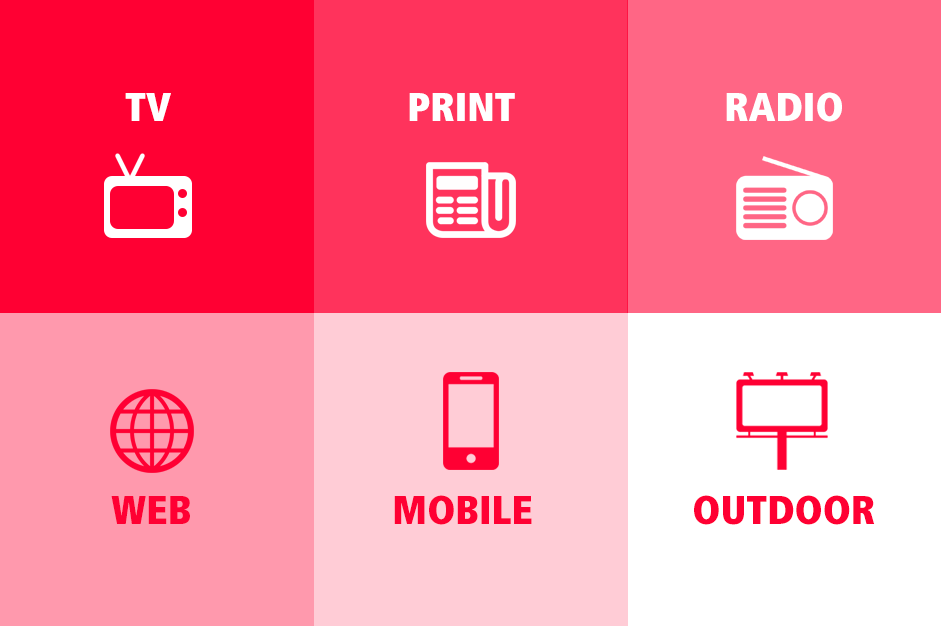With so many media options, it’s difficult to know where to spend ad dollars with a comprehensive plan. Digital vs. traditional marketing decisions face us daily.
What was old is new again
In 1991, Don Schultz, a professor at the Medill School of Journalism at Northwestern University, introduced the concept of integrated marketing. It was the rage for more than a decade, then went out of favor.
Due to the proliferation of media, particularly digital media, there’s a need to revive Dr. Schultz’s concept.
Things change. Think back. Digital replaced print film. Email superseded the fax machine. Streaming audio displaced CDs. But in a surprising number of cases, the new is additive rather than a replacement.
This is most evident in the world of media.
Digital vs. traditional marketing battles still rolls on
Newspapers didn’t go away when the radio was invented. Radio didn’t die when we started watching TV. Billboards are still ubiquitous. Ads appear in restrooms, on blimps and in, and sometimes on, stadiums. One New York City sidewalk had a spray-painted message: “From here it looks like you could use some new underwear” to sell women’s undergarments.
Media has proliferated. It’s everywhere and it has blurred. We can watch TV on YouTube, read newspapers on our iPad and listen to radio on our smartphones.
With so many media choices, it’s difficult to know where to spend our advertising dollars.
Fortunately, we can rely on good guidance provided by the core principles of marketing.
The process begins with the development of a strategy. It begins with finding an idea you can own in the mind of your customer — the position. This idea will be most meaningful with a segment of the population. We must really understand that segment. Only then can we evaluate media to determine which is the most efficient and effective in reaching that audience segment.
For many, it is tempting to say, “I want to advertise on TV” or, “Let’s do a newspaper ad.” Not so fast. Until you have completed your strategy, you must remain media neutral.
It is true that strategy drives tactics, including what media to use. It is also true that tactics dictate strategy. Sound backwards? As strategy and tactics are formed, a reverberation takes place.
For example, a strategy might lend itself to network TV to reach the targeted audience segment. However, tactically, that also includes resources (including money) that might be too limited, requiring a revised strategy.
What might seem like an insightful strategy might be tactically unfeasible. So there might be a few iterations, going back and forth with strategy and tactics until the “aha” moment is reached.
Media buyers use the term CPM, which stands for cost per thousand, to assess the value of an ad medium. But a better measure is to factor in the impression that a particular medium might provide. An advertisement makes a different impression on the sports page in the newspaper compared to on television or during a radio broadcast.
We must consider digital advertising
Today, of course, we must consider digital advertising. Does an ad at the top of the Google search page create the same impact as the ads on the side of your Facebook page or a billboard on the side of the road?
The metrics from digital advertising audiences/interactions often are inflated and difficult to compare with other media.
More than 50 percent of the articles in advertising trade journals are about digital, and they are overwhelmingly positive about digital, but traditional advertising is not dead.
The articles are partly propaganda. They try to persuade us that if we don’t tow the digital line, we’re not cool. The actual spend on digital averages around 25 percent of the media total. This varies by product and market, but remember, on average, more than three-quarters of an advertiser’s media budget is invested in traditional advertising media.
My counsel is this: All media — traditional and digital — should be challenged. Challenge not just on the CPM, but also on the impression itself and how well your media target your market segment.
Mark Ritson, professor at Melbourne Business School, holds strong beliefs about digital marketing. Tenure perhaps gives the professor a license to use profanity without retribution, though he is quite entertaining and insightful. His talks are on YouTube.
“It’s the greatest scandal in the history of advertising,” Ritson said.
We like shiny new things. We’re desperate not to be left out. As a CEO, as a marketer, we don’t want to appear out of the loop. If we don’t talk digital marketing, it sends the wrong signal. Who doesn’t want to be cool?
Here’s one more bit of advise: Stop obsessing about millennials. They’re not all the same. Five times more people will buy a new car between the ages of 75 and death than the millennials between 18 and 24. That’s according to “Ad Contrarian” Bob Hoffman. Check him out on YouTube. Be warned, he too is a bit off-color.
The bottom line is this: It’s not either/or. It’s about integrated marketing. Thank you, Dr. Schultz. With so many choices, the media plan became a little more difficult to prepare, but the reality is it is still about getting the right mix.
One last thought. I predict it won’t be long before the term “digital” goes out of style. It will all become one big blur called what it used to be called: advertising. Digital vs. traditional marketing may no longer be a battle.



